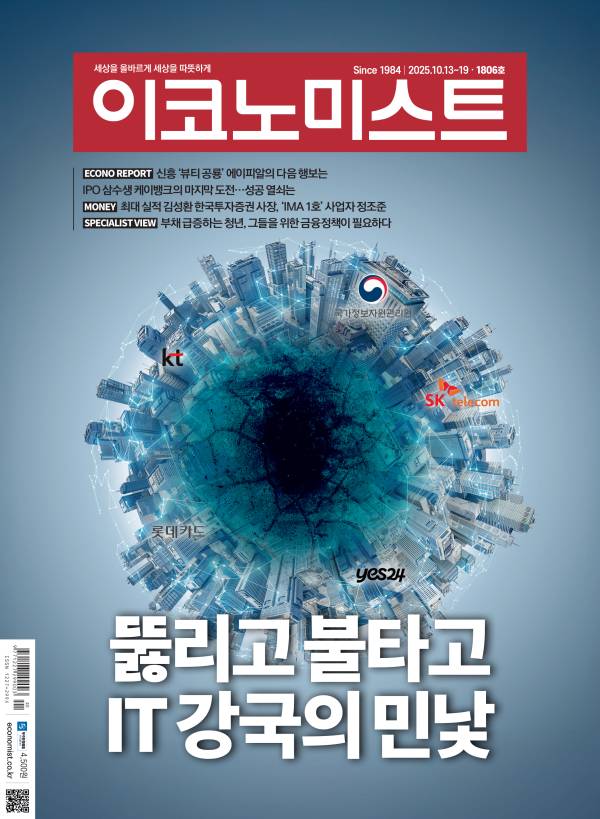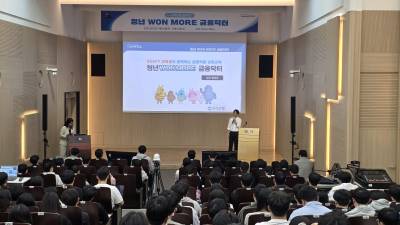- SKU는 ‘stock keeping unit’ 약어
  코카콜라 벨기에 공장 라인. |
지난 호 마케팅 4P 강의에 이어 오늘은 생산관리에 관한 내용을 다루어 보고자 한다. 생산관리는 투입물(자재, 노동, 에너지 등)을 산출물(재화나 용역)로 변환하는 프로세스 혹은 시스템을 관리하는 것으로서 한정된 자원을 최대한 효율적으로 활용하고 고객의 니즈를 효과적으로 충족시키기 위한 과정이다.
Operations management is an area of business concerned with the production of goods and services, and involves the responsibility of ensuring that business operations are efficient in terms of using as little resource as needed, and effective in terms of meeting customer requirements. It is concerned with managing the process that converts inputs (in the forms of materials, labour and energy) into outputs (in the form of goods and services).
위 문장에서 사용된 requirement와 convert의 의미와 사용 예를 살펴보도록 하자. requirement는 굳이 우리말로 번역하자면 필요조건 혹은 요건이다. 무언가를 하는 데 꼭 요구되는 조건이란 뜻이다. 컴퓨터를 예로 들자면 특정 애플리케이션이 구동하기 위해 필요한 최소 사양(메모리, 프로세서 등)이 있다.
이때 최소 사양을 system requirement라고 표현한다. 금융에서 투자를 위해 얼마만큼의 자본이 필요한지를 나타내는 표현으로 capital requirement를 사용한다. 두 번째 표현은 convert. convert는 전환하다는 뜻이다. 좀 더 쉬운 표현으로 turn이란 단어가 있다. 금융에서 전환사채를 convertible bond라고 한다.
채권이지만 향후에 주식으로 전환할 수 있는 옵션이 포함된 사채를 말한다. 종교적인 의미에서 convert는 개종하다란 의미를 가지고 있다. 개종한 사람에 대해서는 convert라는 명사형을 쓴다.
An optimal level of inventory allows a business unit to obtain flexibility in production schedule. If the inventory size is too small, it will be extremely difficult for the manager to effectively plan production because every time the unit runs out of stock, machines have to be stopped until inventory is ordered and restored. This means a large amount of additional operations cost and an increased overall production cost. On the other hand, if there’s too much inventory on hand, the company will incur more holding cost than its competitors.
비용, 손실 등 발생할 경우 incur cost (or loss) 생산관리에서 재고 관리는 가장 필수적인 부분 중 하나다. 재고 관리는 기업의 가치 평가(valuation) 시 미래 잉여현금흐름(free cash flow)에 큰 영향을 미칠 수 있기 때문이다. 따라서 적정 재고를 유지하는 것이 생산관리의 중요한 목표 중 하나다. 재고가 없어서 못 파는 경우를 품절이라고 한다.
이때 품절은 위 문장에서처럼 run out of stock이라고도 하고, 간단히 stock-out이라고도 한다. 재고 관리와 관련해 ‘SKU’라는 용어가 자주 쓰인다. SKU는 stock keeping unit의 약어로서 상품 분류 단위나 재고 관리 단위를 일컫는다. 음료수 회사의 경우 한 가지 브랜드라 하더라도 용량(250mL, 500mL 등)이나 용기(캔, 병, PET) 별로 SKU가 있고 SKU별로 재고 관리가 이루어진다.
마지막 줄에 있는 incur라는 표현도 매우 유용하게 쓸 수 있다. 손실, 손해, 비용 등이 발생할 경우 타동사로 incur cost(or loss) 등으로 표현한다. 이 경우 이외에 일반적으로 발생하다라는 의미의 표현으로는 occur, take place, arise 등을 쓸 수 있다.
When you keep your inventory in a warehouse or other storage facility, you’ll have to pay rent and other storage fees. Usually, the storage fee is calculated on the basis of the space you’ve rented. Of course, you can build your own storage facilities. In this case, the lump sum you’ve invested in the warehouse is amortized over its usable life and is treated as an expense item in accounting.
All inventory items should be insured against potential damages, such as natural disasters, fire, and rough handling. The amount of insurance fee on an inventory item usually depends on its value and the likelihood of its being damaged in the above-mentioned hazards.
lump sum은 총액 혹은 일시불이라는 의미다. 예를 들어, 연금(annuity)에 가입할 경우 한꺼번에 모두 납입하는 일시납과 분납 방식이 있다. 이때 일시불은 lump sum 혹은 up-front payment(선납)라고 하고 분납 방식은 installment payment라고 하면 된다.
amortize는 투자 총액을 몇 년에 걸쳐 비용으로 인식한다는 의미로서 무형자산(intangible assets)을 상각할 때 쓰는 표현이다. 건물 등 유형고정자산(tangible fixed assets)을 감가상각할 경우는 depreciation이란 용어를 쓴다.
손해보험회사는 non-life insurer
Insure against라고 하면 특정 위험에 대비해 보험을 든다는 의미다. 여기서 잠깐 보험 관련 용어를 살펴보면 계약자 (policyholder)가 내는 보험료는 premium이고, 사고 등으로 보험금을 받게 될 때 보험금은 claim이라고 한다. 보험회사는 insurer, 생명보험회사는 life insurer, 손해보험회사는 non-life 혹은 property and casuality insurer라고 한다.
Professor: What are the advantages of McDonalds to keep high levels of inventory?
Lauren: In my opinion, the most important advantage is a high level of inventory saves against the sudden variation in product demand. It is normally difficult to predict how many people are going to show up in a particular restaurant on any given day. So, keeping some extra supplies in a fridge really helps to meet sudden high demands.
편차가 심한 상황, 즉 그래프로 나타냈을 때 up and down이 많은 상태를 나타내는 표현들이 몇 가지 있다. 그 대표적인 것인 fluctuate란 표현이다. demand 등이 들쭉날쭉할 경우 fluctuating demand라고 표현한다. 주식시장이 요동을 치는 경우도 fluctuating이란 표현을 쓰지만, 변동성이 크다는 의미의 volatile이라는 표현을 더 많이 쓴다.
variation은 variation in demand, variation in prices 등 주로 명사형으로 사용한다. any given day는 우리나라 사람들이 잘 쓰지 못하는 표현이다. ‘무작위로 어떤 특정일에’라는 표현으로 매우 자주 쓰이는데, given이 이런 식으로 사용되는 데 익숙하지 않기 때문이다. given은 분사구문으로 써서, given the current circum stances 등으로 표현하면 ‘상황을 고려할 때 혹은 감안하면’이란 뜻으로 쓰인다는 것을 알아두면 좋다.
ⓒ이코노미스트(https://economist.co.kr) '내일을 위한 경제뉴스 이코노미스트' 무단 전재 및 재배포 금지










![도로 위의 크리에이터, ‘배달배’가 만든 K-배달 서사 [김지혜의 ★튜브]](https://image.isplus.com/data/isp/image/2025/09/25/isp20250925000152.400.0.jpg)
![비혼시대 역행하는 ‘종지부부’... 귀여운 움이, 유쾌한 입담은 ‘덤’ [김지혜의 ★튜브]](https://image.isplus.com/data/isp/image/2025/10/02/isp20251002000123.400.0.jpg)



당신이 좋아할 만한 기사
브랜드 미디어
브랜드 미디어
“한국인 발견하면 즉각 구조”…‘범죄단지와의 전쟁’ 선포(종합)
세상을 올바르게,세상을 따뜻하게이데일리
이데일리
이데일리
클라라, 6년 만에 파경…남편과 무슨 일?
대한민국 스포츠·연예의 살아있는 역사 일간스포츠일간스포츠
일간스포츠
일간스포츠
“한국인 발견하면 즉각 구조”…‘범죄단지와의 전쟁’ 선포(종합)
세상을 올바르게,세상을 따뜻하게이데일리
이데일리
이데일리
'연금 고갈 우려'…전통자산 한계에 VC에 눈 돌리는 유럽
성공 투자의 동반자마켓인
마켓인
마켓인
‘美 공식 의료 인정’ 로킷헬스케어 급등...외국인 투심 몰린 휴온스도 강세[바이오맥짚기]
바이오 성공 투자, 1%를 위한 길라잡이팜이데일리
팜이데일리
팜이데일리